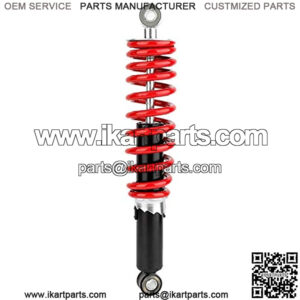Step 1:
The first step in selecting a shock absorber is to gather all of the required information to size the shock absorber properly. This information typically includes the weight and velocity of the moving mass and the anticipated number of cycles it undergoes in an hour. First, determine the amount of kinetic energy (EK) in the system.
EK = W/(722)(V2)
Where:
EK = kinetic energy, in.-lbs
W = weight of moving mass, lbs.
V = velocity of moving mass, in./s
This equation represents the amount of kinetic energy that the shock absorber will convert to thermal energy each time it is impacted.
Step 2:
Calculate the work energy in the application. Work energy (EW) is defined as the amount of energy a motor or other device generates to move the load:
Ew=FD x S
Where:
Ew = work or drive energy, in.-lb
FD = force output of the motor (drive force), lb
S = stroke of the shock absorber, in.
Then the Total Energy (ET) in the application per cycle (in.-lb/C) is:
ET=EK + EW
Step 3:
Determine the total energy ET that the shock must convert in one hour.
Multiply the ET by the total number of cycles per hour C:
ETC = ET x C.
Where:
C = repetition rate, cycles/hr.
Step 4:
Determine the shock force, Fp (lb). Shock force is defined as the resistive force required by the shock absorber to stop the moving load:
Fp =ET/(S x.85)
Where:
S = the stroke of the shock absorber (85% efficiency), in.
The differences in these damping characteristics relate to the efficiency of the damping used.Shock absorber efficiency increases as more energy spreads over the stroke of each one.
Step 5:
Calculate this g-load:
g = (FP – FD)/W
Step 6:
When all calculations are complete, a shock absorber can be selected that meets all of the application’s requirements. Make certain that it meets all of the requirements simultaneously;
otherwise it can fail prematurely. For example, if the selected shock absorber meets the energy per cycle requirement, but not the energy per hour requirement, it will surely fail too soon.

